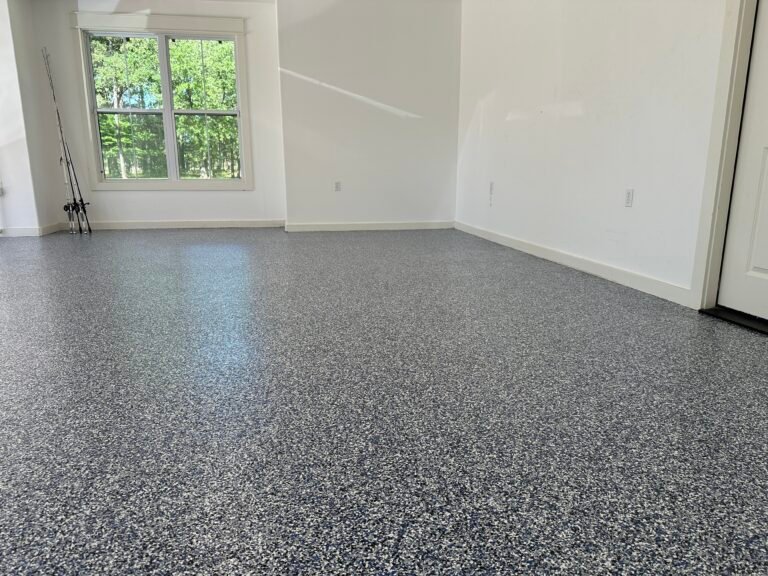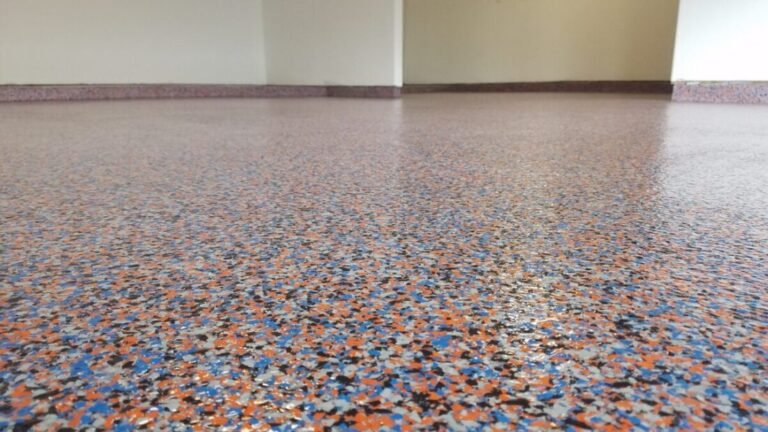Comparing Epoxy Flooring Installation Costs Across East Texas
Epoxy flooring has long been popular in East Texas for its durability, sleek appearance, and versatility. However, polyaspartic has emerged as an even more robust alternative – offering faster cure times, better UV stability, and superior long-term value. If you’re researching costs for epoxy or considering a polyaspartic installation, this guide will help you budget for your next project while clarifying why many homeowners are shifting to polyaspartic (often with decorative flake or quartz finishes).
1. Factors Influencing Installation Costs
Area Size and Condition
- Square Footage
Most installers price by square foot. Larger spaces can sometimes yield a lower per-square-foot rate. - Floor Condition
Repairing cracks, filling holes, or addressing moisture issues can increase costs. Proper prep ensures a long-lasting bond.
Pro Tip: Even small jobs benefit from professional surface prep – poorly repaired surfaces may lead to premature peeling or cracking.
Type of Coating
- Standard Epoxy
A cost-effective classic, but may yellow over time (especially outdoors) and can have longer cure times. - Polyaspartic (Flake or Quartz)
Combines durability, UV stability, and fast cure. Although more expensive, polyaspartic typically lasts longer and resists common issues like yellowing or chalking. - Metallic or Custom
Specialty designs (metallic swirls, custom color blends, logos, etc.) can increase both material and labor costs.
Design and Customization
- Color/Flake Choice
Single-color solutions may cost less than multi-flake or quartz blends, which provide extra slip resistance and visual appeal. - Multi-Layer Systems
Additional coats or decorative elements can bump up the price but also enhance durability and aesthetics.
2. Average Installation Costs in East Texas
Across East Texas, you can generally expect $5.50 to $8.00 per square foot for high-quality coatings, including polyaspartic and decorative flake/quartz finishes. This range reflects variables like:
- Existing Floor Condition: More extensive prep work increases costs.
- Customization: A basic single-color system might be at the lower end, whereas intricate designs or heavy flake/quartz broadcast could approach the upper limit.
- Cure Time Requirements: Polyaspartic floors cure quicker, but the product itself is more premium than basic epoxy.
Pro Tip: Don’t let sticker shock dissuade you. The longevity and reduced maintenance of a higher-quality coating often make it more cost-effective long term.
3. Why Polyaspartic Outshines Traditional Epoxy
Polyaspartic has gained traction in East Texas for good reason:
- Faster Cure
Floors can often handle foot traffic within hours—and we recommend 48 hours before parking. This is significantly quicker than many epoxy systems. - UV Stability
Texas sunshine can cause standard epoxy to yellow or chalk. Polyaspartic resists discoloration, keeping your floor pristine. - Durability & Chemical Resistance
Whether it’s oil drips, pool chemicals, or workshop spills, polyaspartic stands up where lesser coatings may peel or stain.
Flake or Quartz Options
Choosing a flake or quartz finish not only enhances traction but also masks minor imperfections, giving your floor a clean, decorative look that can match your home’s style.
- Flake: Available in numerous color blends for a speckled, modern vibe.
- Quartz: Offers a textured, natural stone appearance while boosting slip resistance.
Pro Tip: If you love customizing your space, flake or quartz finishes can complement a variety of color schemes and home designs.
4. Budgeting Tips for Your Project
- Get Multiple Quotes
Compare pricing and scope from at least two or three contractors. Ensure each quote includes surface prep, crack repair, and any warranties or guarantees. - Assess Long-Term ROI
A cheaper epoxy install might save you money up front, but polyaspartic could last longer, saving on future repairs or recoating. - Plan for a Day or Two of Downtime
While polyaspartic is faster than epoxy, you’ll still need about 48 hours before heavy loads or vehicles. - Focus on Quality Prep
Even the best coating fails without proper preparation. Make sure your chosen installer uses mechanical grinding or similar methods.
Epoxy vs. Polyaspartic – And Where to Splurge
While epoxy remains a popular choice for many East Texas properties—thanks to its affordability and variety of finishes—polyaspartic stands out as the ultimate upgrade. Its faster cure, UV stability, and high durability make it an ideal solution for homeowners wanting a premium floor that can handle East Texas weather swings with ease.
Why Epoxy Coat Masters Recommends Polyaspartic
If you want a flooring solution that can handle Texas heat, frequent foot traffic, and occasional spills – while looking showroom-ready – polyaspartic is our top pick. Add in flake or quartz for slip resistance and custom aesthetics, and you’ll see why more East Texas homeowners are making the switch.
Contact Epoxy Coat Masters Today
Need expert advice on epoxy vs. polyaspartic (flake or quartz) for your next project in Tyler, Longview, or anywhere else in East Texas? Epoxy Coat Masters is here to help. We’ll evaluate your space, discuss costs in detail, and recommend the best coating strategy for your needs – ensuring a beautiful, long-lasting floor that stands up to local conditions. Reach out today for a free consultation and discover how to get the most value from your flooring investment.







